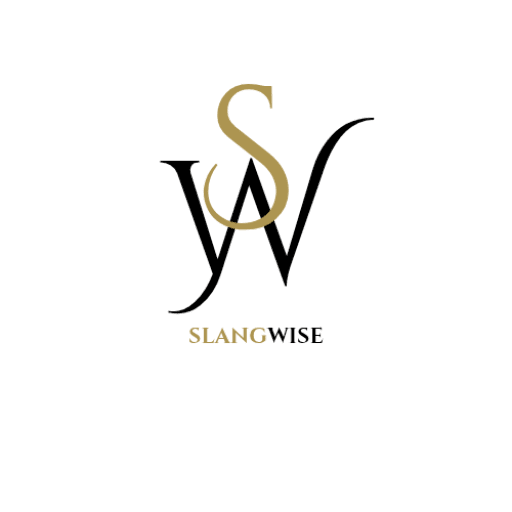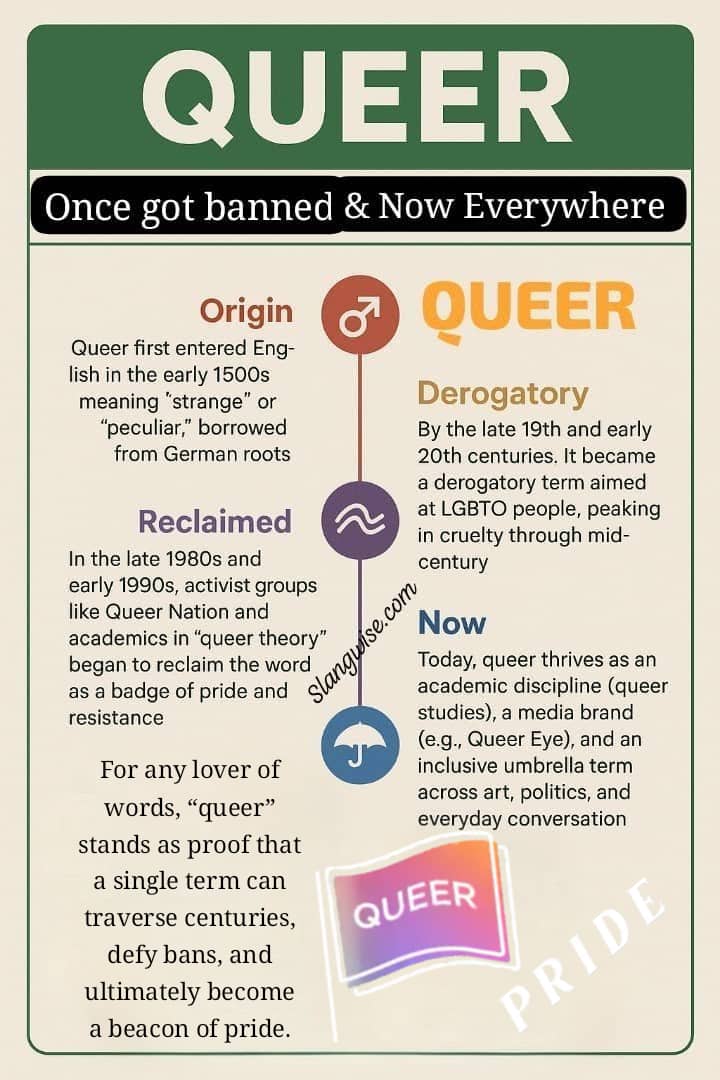Human language evolves, and few terms illustrate that journey better than queer. Once banned from polite speech and wielded as a harsh insult, it now stands at the forefront of identity, scholarship, and popular culture.
Understanding how queer made this dramatic turnaround unveils the power of community, resistance, and the dynamics of slang itself.
Table of Contents
QUEER In a Nutshell
- Queer first entered English in the early 1500s meaning “strange” or “peculiar,” borrowed from German roots .
- By the late 19th and early 20th centuries, it became a derogatory term aimed at LGBTQ people, peaking in cruelty through mid-century.
- In the late 1980s and early 1990s, activist groups like Queer Nation and academics in “queer theory” began to reclaim the word as a badge of pride and resistance .
- However today, from studies, I noticed queer now, thrives as an academic discipline (queer studies), a media brand (e.g., Queer Eye), and an inclusive umbrella term across art, politics, and everyday conversation .
SlangWise Tip: Reclaiming a word can flip its power, own the language, and it will own the conversation.
Origin of Queer: From Odd to Outcast
The origin of queer lies in the early 16th century, when English borrowed the German quer, meaning “across” or “askew.” By mid-1500s, it described anything odd or peculiar.
Looking into the Oxford University Press notes, I discovered that the slang queer merged with a separate slang meaning of “bad” (often spelled quire), eventually coalescing into the single term queer used to denote strangeness.
Over the next few centuries, queer retained its general sense of oddness, until the late 19th century. Around 1894, the word began to target same-sex attracted individuals.
By the early 1900s, its use as a slur had become entrenched in American and British societies, often appearing in legal and medical records as an insult.
Read Also: 7 most controversial Slang Words in Sports Right Now and why leagues want them banned. A brief overview.
The Dark Peak of Queer and Its Legal Bans
Through the mid-20th century, queer was taboo. Families, schools, and even laws censured its use. Mass media refused to print it outside of sanitized quotations.
In many places, the term was effectively banned from broadcast and academic discourse, deemed it too offensive for print or airwaves. This formal and informal censorship relegated queer to underground communities, fueling its sting as a weapon of exclusion.
The Turning Point
The turning point for queer arrived in the late 1980s. Groups such as Queer Nation in New York City and protest movements like ACT UP began to reappropriate queer as a symbol of defiance against conservative norms.
Activists plastered the chant “We’re here, we’re queer, get used to it!” across protest banners, forcing society to confront discrimination head-on .
Simultaneously, academia embraced queer in a new light. Pioneering scholars launched queer theory and queer studies programs, interrogating the binaries of gender and sexuality.
This intellectual embrace legitimized the term in universities worldwide, transforming once-banned slang into a subject of rigorous study.
Queer Today: Mainstream and Inclusive
In the 21st century, queer shed its taboo status entirely. It now appears in:
- Media and Entertainment: Hit shows like Queer Eye and publications like Queer Science use the word as a positive identifier.
- Pride and Politics: Corporate pride campaigns and political platforms adopt queer to signal inclusivity.
- Academic Fields: Universities offer bachelor’s, master’s, and PhD tracks in queer theory, queer art, and queer history.
- Everyday Speech: Online communities, street art, and public discourse employ queer as a proud, umbrella term for anyone outside heterosexual-cisgender norms.
This omnipresence underscores a remarkable cultural shift: a term once erased is now celebrated.
Why It Matters for Slang Lovers
The journey of queer teaches several lessons about slang and society:
- Grassroots activism can transform labels of hate into symbols of empowerment.
- Even if institutions ban a word, its meaning can shift underground until it resurfaces stronger.
- When scholars study and teach a slang term, they legitimize it for wider society.
- Words evolve based on cultural forces, what’s banned today may be celebrated tomorrow.
Finally
The tale of queer offers a blueprint for understanding how slang can be both weaponized and liberated. It reminds us that language is a living tool, reflecting power dynamics, social movements, and collective will.
For any lover of words, queer stands as proof that a single term can traverse centuries, defy bans, and ultimately become a beacon of pride.
Further Reading & Resources
- Oxford University Press on the origins and evolution of queer
- LGBTQ Nation’s exploration of queer as slur and reclaimed identity

